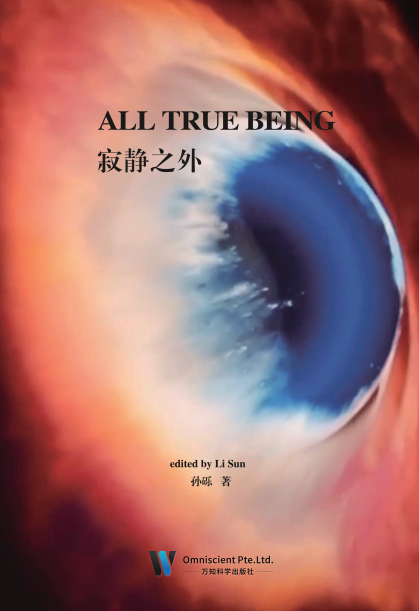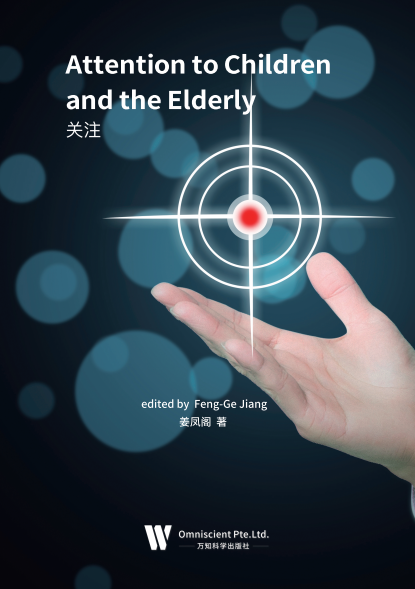二O二O年的确是极其不平凡的一年,世纪瘟疫新冠病毒肆虐全球,持续半年的澳洲大火也烧不死小小的病毒,温室效应导致的森林大火毁灭了亿万生灵。高烧的地球愤怒了,一场反嗜人类的反击开始了。地球启动了自己的免疫系统,派出细菌部队中的精锐士兵新冠病毒攻击人类。新年伊始,期待欢庆的人们突然惊惶失措,为了控制病毒的传播,封城封国还封口,口罩成为最紧俏最时尚的防护用品。死亡的幽灵在全世界游荡,百日之内就席卷一百多个国家,使亿万人魂不守舍,数百万人命丧黄泉。上帝按下了人类活动的暂停键,工厂停产、商店闭市,车船停驶、飞机停航、医院病人暴满,医疗物资紧缺,病毒感染者以日剧增,五洲四海惊恐万状,世界各国一片混乱。然而,祸不单行,天灾人祸不断降临,非洲干旱,亚洲洪涝,西方种族冲突严重,东方战争硝烟阴云密布,世界末日的梦魇在人们头上盘旋,人类社会的灭顶之灾为什么来得这么突然?其实,这场灾难岂非一日之寒,近百年来,人类企图用科技的魔法控制自然界,肆无忌惮地掠夺蹂躏大自然,毁林放牧、猎杀动物、开矿掘金、上天入地、越洋潜海,无所不用其极地称霸地球,创造千奇百怪的新奇之物,以满足自己无限膨胀的享乐欲望。把地球弄得满目疮痍乌烟瘴气,导致生态环境日益加剧恶化,各种自然灾害频频发生。仅仅在二十一世纪初期的二十年间,九级地震就发生了三次,摧毁房屋千万间,死伤近百万。七八级以下地震就更多了,损失也十分巨大。海啸飓风龙卷风年年席卷沿海城市,生命财产损失惨重。温室效应产生的厄尔尼诺和娜尼拉两个妖魔,引发洪涝、干旱、蝗灾,热浪、风暴、冰川消融,森林山火等灾害连连,使人类苦不堪言。面对大自然的一次又一次的震怒,人类仍不思悔改,因为那些处境优越的精英权贵们住在豪宅宫殿,总觉得灾难降不到他们头上。可是,“天地不仁,以万物为刍狗”,一旦上天震怒,灾难面前也是人人平等的,细菌病毒不认识高贵贫贱,统统都会被它攻击。二十一世纪初降临人间的非典与新冠两种病毒,就像两个超级妖魔要吞噬人类,让人与人之间互相传染,成几何级数的迅速传播,致使人类互相残杀,从而加速人类的灭亡。上帝已敲响了人类的丧钟,人类将何去何从?

All methods based on the heart. In the market, there are many books about heart and psychology. There are some psychological adjustment methods like family arrangement. It is probably to transfer attribution from external attribution to internal attribution at the first step. That is to say, all problems should be solved by returning to the inner heart.
Some books or some traditional methods also mentioned that the heart should be calm. In our way, it is to say that secular heart returns to the true heart. To understand it easily, we need to return to the heart consciously. The connection of the truth of the heart belongs to the inside.
From personal psychological adjustment to social psychological adjustment, it is the connection and combination of the truth of the heart and the universe. Using the existing secret explored from us promotes the social civilization so as to find the truth of connecting university.
前 言
万法归心,市面上很多很多的这个鸡汤,心灵书,还有有一些心理书,有一些像家庭排列的一些心理调整方法,它大概都是首先把归因呢从外部归因法转到内部转向内部的归因法。也就是说人们所有的问题都是回归内心的来解决的!
也有一些书籍,或者说一些传统方法也提到过的这个呢,就是心归一处,用我们的方法来说呢,是讲世俗的心回归到自心真相这个层面,好理解的讲就是说有意识回归心灵啊,自心真相的接入,属于内篇。
从个体心理调整到社会心理调整,也就是我们真实的要说的就是讲我们这个自心真相与宇宙真相的连接和合一。应用已经发掘出来的我们身上早已蕴藏的生命的大秘密用于社会文明的提升,从而洞悉链接宇宙真相。

This book focuses on “paying attention to the hot spots of public life and leading people’s healthy life”. Starting from the outlook on life development, world development and scientific development, this book expounds the broad and profound philosophy of life and its application value in real life.
People’s livelihood is a major event in people’s life. The focus of people’s livelihood lies in food safety, mental and physical health, early childhood education and elderly life. Food is the raw material of human body’s hematopoiesis. The production of green food and organic food is the fundamental way to ensure people’s mental and physical health. Health is the first priority in life, which should be widely concerned by the society.
Children are the fresh blood of society. The level of children’s education is related to the future and development of the nation. The elderly are the precious wealth of the society. The Chinese nation has a glorious tradition of respecting and loving the elderly since ancient times. The physical and mental health and living conditions of the elderly are related to social harmony, stability and development. Therefore, paying attention to early childhood education and elderly life is the top priority of people’s livelihood. It is an important measure to realize the great rejuvenation of the Chinese nation to do a good job of taking care of the elderly and children, which should be paid more attention to by the society
前 言
本书以“关注大众生活热点,引领百姓健康生活”为主线,从人生发展观、世界发展观和科学发展观入手,阐述人生哲学博大精深的理念及其在现实生活中的应用价值。
民生是百姓生活中的大事,民生的重点在于饮食安全、心身健康、幼儿教育和老年生活。食物是人体的造血原料,生产绿色食品和有机食品,是确保人们心身健康的根本途径,健康是生活中的第一要务,应引起社会广泛关注。
幼儿是社会的新鲜血液,幼儿的教育水平高低关系到民族的前途与发展。老年人是社会的宝贵财富,中华民族自古以来就有尊老爱老的光荣传统,老年人的心身健康和生活状态关系到社会和谐稳定与发展,因此,关注幼儿教育、关注老年生活是民生中的重中之重。抓好一老一小是实现中华民族伟大复兴的重大举措,更应引起社会的广泛关注。

Yao asked Shun what is the most precious thing in the world. Shun said that life is the most precious. At 14:25 on July 18, 2019, the bridge erecting machine of No.2 Hanjiang Bridge in the SG-3 bid of the first-class highway reconstruction and expansion project of Mian County section of national highway 108 suddenly disintegrated and overturned during the operation, resulting in 5 deaths, 4 serious injuries and 3 minor injuries, and the direct economic loss was about 12.953 million RMB. Injuries, financial losses, deaths, one after another of the safety production accidents, once again exposed the outstanding problems and severe situation of traffic engineering construction safety production in recent years. Safety production, like the sword of Damocles, should not be discussed or neglected. What is beneficial to the people should be done even if it is small; and harmful things should be removed even if they are small. Safety production is the eternal theme of enterprises, and enterprises are the responsibility subject of safety production. History is our teacher. From ancient times to the present, no matter what kind of work we do, we have to persevere to finish the “last kilometer” before we can successfully complete the task and achieve the set goal; otherwise, we will be in vain and lose all our previous achievements.
Wencheng Taishun (Zhejiang Fujian border) highway (hereinafter referred to as “Wen Tai expressway”) is an important part of “two vertical, two horizontal, 18 connected, three winding and three passageways” in Zhejiang Province, and it is also the last stop for Zhejiang to realize the “county to county highway” in land area. Wen Tai expressway is located in the mountainous area of southern Zhejiang Province. The total length of the route is 55.963km, and the bridge tunnel ratio is 72.24%. The terrain, landform and geological conditions are very complex. It has the characteristics of high technical difficulty, high requirements of ecological environment protection, large scale and large investment. During the peak period of construction, more than 10000 people and more than 200 sets of special equipment were involved in the construction. In the face of the severe situation of safety production and the huge pressure of safety management in the construction of Wentai expressway, “Wen Tai people” meet the difficulties and shoulder the mission. They apply the spirit of “bright sword” to actual management, break through the “last kilometer” of safety production and strictly abide by the red line of safety production.
Safety is the basic demand of people and the basic guarantee of economic and social development. Safety responsibility is more important than Mount Tai. Every unit and person in the construction of the project should always maintain safety awareness, shoulder their due responsibilities, and jointly build a good safety production environment. Some major safety accidents, often with the characteristics of sudden, unexpected and complex, seem to be unable to prevent and avoid, but in fact, they sprout from the hidden dangers of daily neglect and hidden in irresponsible details. It can be said that human negligence and paralysis of safety thinking are the biggest hidden dangers, and the hidden dangers often lead to accidents.
Safety development is a major political issue. We, Wen Tai builders, have always firmly established the concept of “safety first, life first”, strengthened bottom line thinking and red line consciousness, and earnestly shouldered the sacred responsibility of promoting security development. In the face of severe safety production situation and complex and changeable safety production situation, we innovate the safety production management ideas, put forward the safety production management slogan of “strive to build the safety management benchmark of mountainous expressway”, constantly optimize the safety management mode, pay close attention to the safety production management, and comprehensively build the safety project.
This book combs and summarizes the experience and practice in safety management during the construction of Wen Tai expressway, and sets a good example for reference and promotion in similar projects. “Establishing the trend of long-term security, growing the cause of governance”. Let us always tighten the string of safety production, continuously improve the level of safety production management and stick to the red line of safety production.
Due to the limited level of editors, coupled with the lack of time, omissions are inevitable. Readers are requested to make comments and corrections.
前 言
尧问舜:“天下孰最贵?”舜曰:“生最贵。”这是上古圣人之语,也是永恒不变的真理。 2019 年 7 月 18 日 14 时 25 分,国道 108 勉县段一级公路改扩建工程SG-3 标汉江 2 号大桥架桥机在作业过程中突然发生解体倾覆,造成 5 人死亡、 4 人重伤、 3 人轻伤,直接经济损失约 1295.3 万元。受伤、财损、死亡,接二连三发生的安全生产事故, 再次暴露出我国近些年交通工程建设安全生产中存在的突出问题、面临的严峻形势。安全生产如同达摩克斯利剑高悬,不容商量,更不容疏忽。利民之事,丝发必兴;厉民之事,毫末必去。安全生产是企业永恒的主题,企业是安全生产的责任主体。“前车之鉴,后事之师”,古往今来,无论做任何工作,只有坚忍不拔走完“最后一公里”,方可顺利完成任务,实现既定目标;否则,将会徒劳无绩,前功尽弃。
浙江省文成至泰顺(浙闽界)公路(以下简称“文泰高速”)是浙江省“两纵两横十八连三绕三通道”的重要组成部分,也是浙江实现陆域“县县通高速”的最后一站。文泰高速位于浙南山区,路线全长 55.963km,桥隧比 72.24%,所处地形、地貌、地质条件非常复杂,具有技术难度大、生态环保要求高、规模大以及投资大等特点。施工高峰期参建人员和特种设备分别达到 10000 余人和 200 余台之多。面对文泰高速建设过程中安全生产的严峻形势和安全管理的巨大压力,文泰人迎难而上,使命担当,把“亮剑”攻坚克难的精神运用到实际管理中,打通安全生产“最后一公里”,严守安全生产红线。
万事安为先,安全是人的基本需求,是经济社会发展的基本保障。安全责任重于泰山,工程建设中的每一家单位和每一个人,都应始终葆有安全意识、担负起应有的责任,共同构筑好安全生产环境。一些重特大安全事故,往往带有突发性、意外性、复杂性的特点,看似防不胜防、难以避免,实则萌生于日常被忽视的隐患、潜藏于不负责任的细节。可以说,人为疏忽与安全思想麻痹是最大的隐患,而隐患往往最终酿成事故。
安全发展是一个重大的政治问题,我们文泰建设者始终牢固树立“安全第一、生命至上”的理念,强化底线思维、红线意识,切实肩负起推进安全发展的神圣职责。面对严峻的安全生产形势和复杂多变的安全生产现状,我们创新安全生产管理思路,提出“努力打造山区高速公路安全管理标杆”的安全生产管理口号,不断优化安全管理模式,狠抓安全生产管理,全面打造平安工程。
本书就文泰高速建设过程中在安全管理方面的经验和做法进行了梳理和总结,树立典范,以便接下去在类似的项目中借鉴和提升。“立久安之势,成长治之业”,让我们时刻紧绷安全生产这根弦。 不断提升安全生产管理水平, 坚守安全生产红线。
由于编者水平有限, 加之时间仓促, 偏颇之处在所难免, 不当之处恳请批评指正。

This collection of drawings is divided into seven large chapters with more than 20 chapters. The construction chapter is placed in the first chapter, and the labor scene occupies the first section, which fully reflects the author’s respect for the landscaping workers. It is they who create the beauty of the garden, and it is they who have drawn a strong brush for the city and the great era. Regarding the construction of Hanghai Square as a separate section, it is not only an important part, but also the publicity and popularization of landscape greening knowledge. Professional peers can exchange and learn from each other, and non professionals can also learn from it. In the chapter of flower scenery, sometimes some poems describing plants or the characteristics of flowers and plants are inserted to show the literature and art at the same time. Plant landscape included in the article is more landscape effect or color characteristics of appreciation varieties. Volunteer activities for public welfare, publicity of traditional festivals, co construction and development, mass entertainment, scientific research competitions and so on all have a complete chapter, which objectively records the 20-year construction and development achievements of Hanghai Square.
Although this set of atlas records the changes of Hanghai Square in 20 years, it reflects the change of Zhengzhou landscape construction in 20 years. It is an epitome of the promotion of Zhengzhou city image and a set of data to confirm the progress of ecological civilization in Zhengzhou. It tells us that to meet the needs of people’s better life and create an ecological and livable environment is the responsibility of gardeners.
20 Years’ Collection of Drawings of Hanghai Square opens up an idea for the four squares affiliated to Zhengzhou Lvwen Square Management Center to gather graphic materials and future development and construction. It gives flowers and plants another kind of life, and it is also a dialogue between us and history. It guides us how to leave some moments of life in our future work and life, and provides some reference. It is a very good form. Of course, there are some shortcomings or regrets in the book, such as the low professional degree of photography, the incomplete collection of landscape science knowledge, etc. But this can not hide the advantages. Please feel the joy brought by the development and change of 20 years when you read it.
前 言
《航海广场 20 年图文集》本图文集共分七个大篇 20 余章节,把建设篇放在首篇,劳动场面又占据首节,充分体现了作者对园林绿化工作者的尊重,正是他们创造了园林之美,也正是他们为这个城市、为这个伟大时代画下了浓重的一笔。把航海广场建设与发展重要节点单独成节,不仅是建设篇的重要部分,更是园林绿化知识的宣传和普及,专业同行可以交流借鉴,非专业人士也可进行科普学习。在花景篇,时而插入一些描写植物的诗句或者花草的特性,欣赏的同时又略显文艺。植物景观篇收录的多是景观效果较好或者有色形特性的欣赏品种。 公益志愿活动 、 传统节日宣传 、共建发展、群众娱乐、科研竞赛等等都有篇目,组成完整章节,客观地记录了航海广场 20 年建设和发展成就。
这套图文集记录的虽是航海广场 20 年的变化,体现的却是郑州市园林建设 20年的变化,是郑州市城市形象提升的一个缩影,是印证郑州市生态文明进步的一集资料。 它告诉我们满足人们美好生活需要、 打造生态宜居环境是园林人的职责所在。
《航海广场 20 年图文集》为郑州市绿文广场管理中心所属四个广场集结图文资料及今后的发展建设打开一个思路。 航海广场 20 年赋予花草另一种生命, 也是我们与历史的对话,引导大家在今后的工作生活中如何留下点滴的生活瞬间,提供一些借鉴,是一种很不错的形式。当然,书中也有些许不足或者遗憾,如照片摄影专业度不高,园林科普知识收录不全等等,瑕不掩瑜,在您阅读时请感受 20 年的发展变化带给我们的喜悦吧。